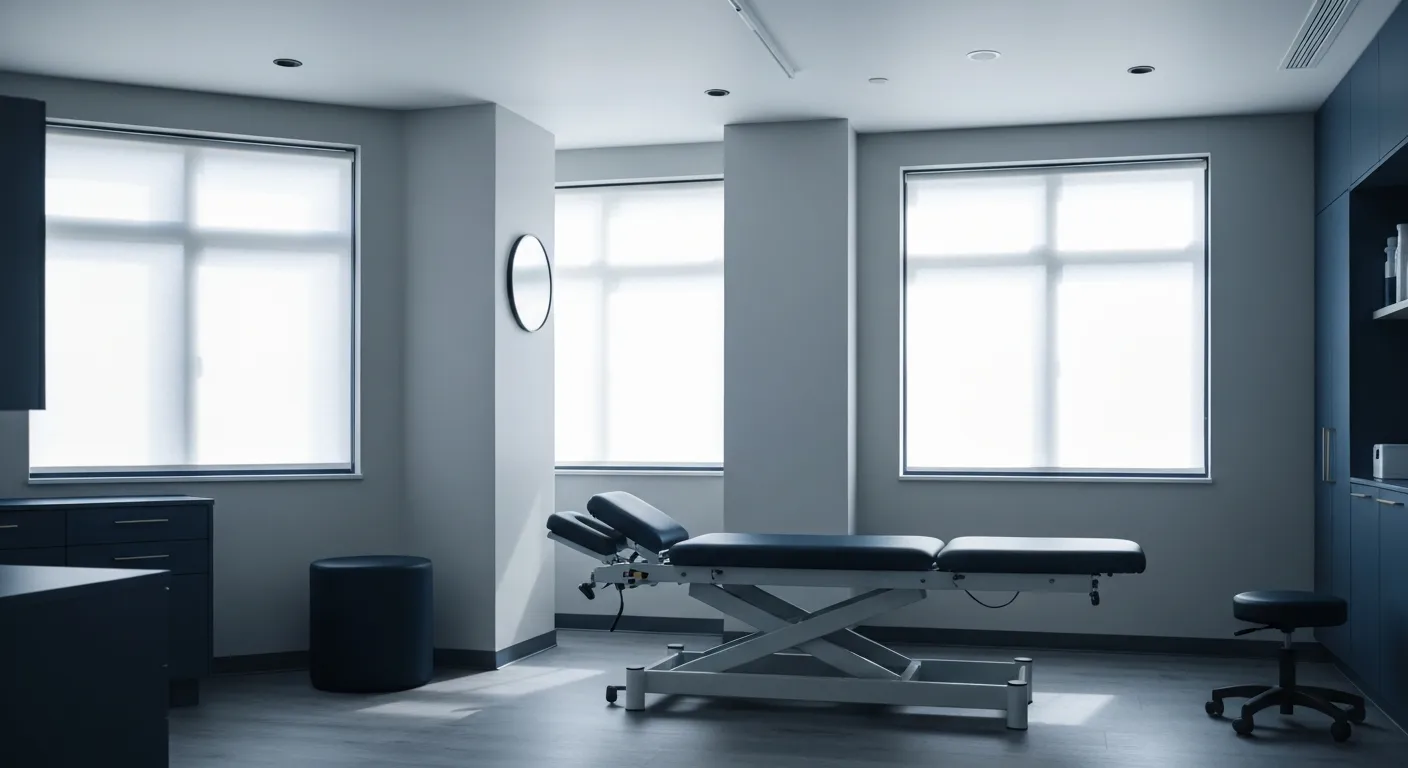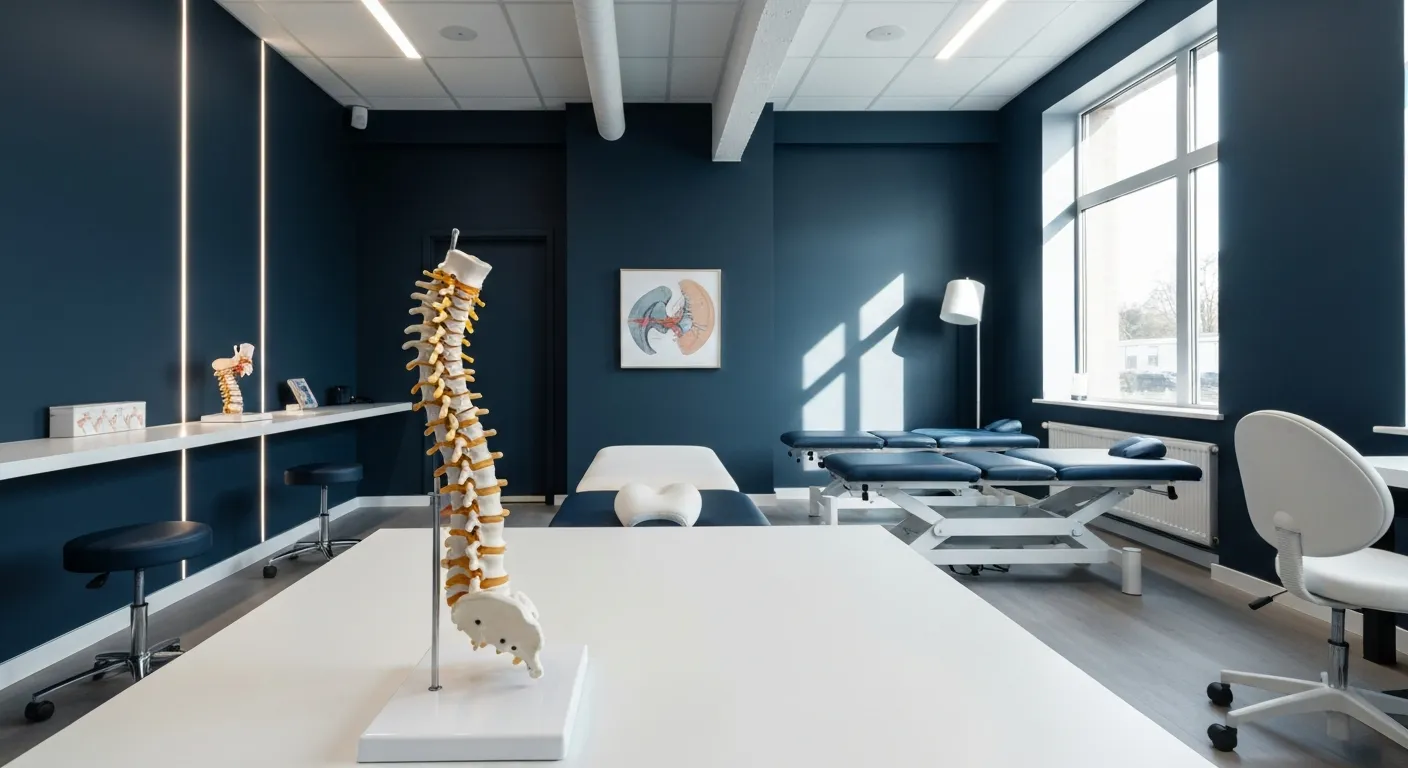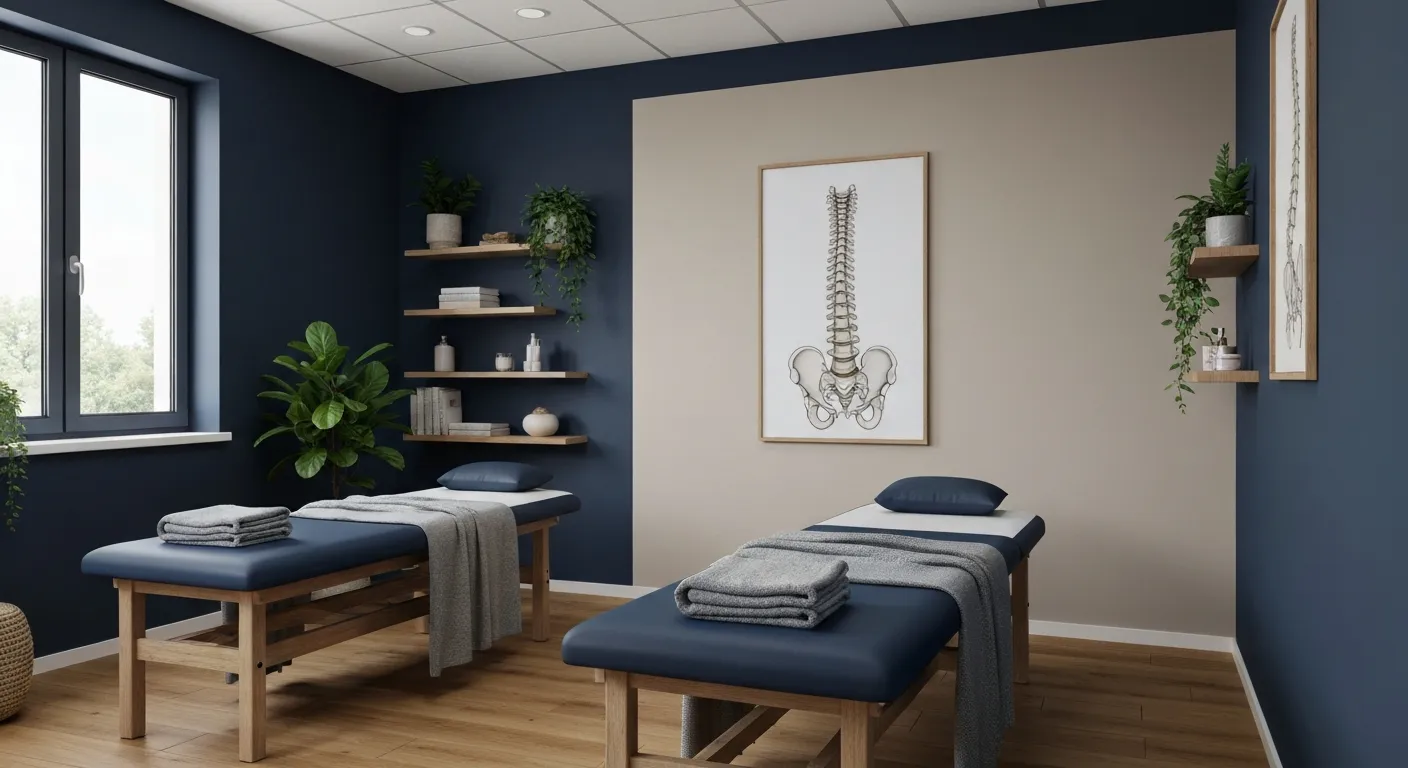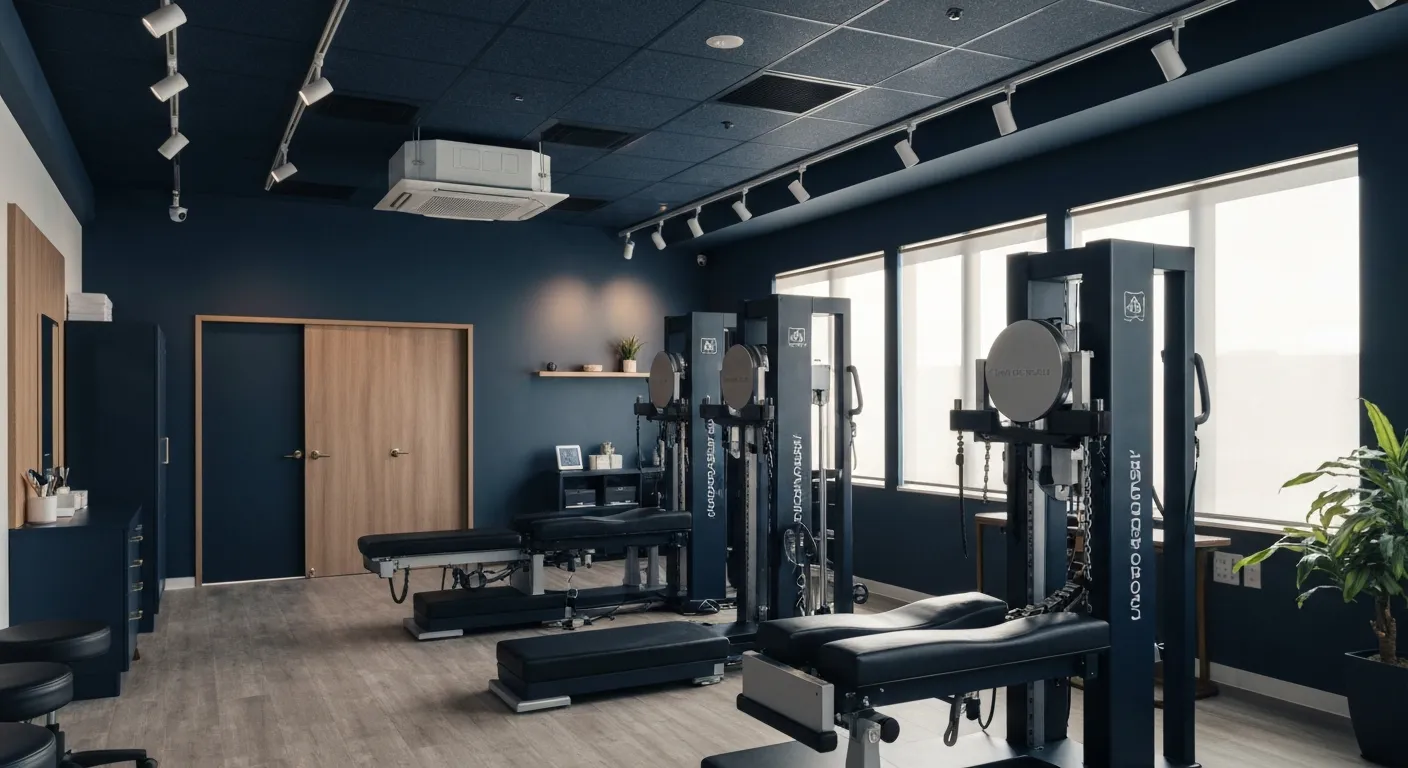Combining Physiotherapy with Chiropractic Treatments for Enhanced Recovery
November 2, 2025
7 min

A Holistic Approach to Healing and Recovery
Combining physiotherapy and chiropractic treatments delivers a powerful, holistic approach to musculoskeletal health and enhanced recovery. This integrated strategy addresses both structural alignment and muscular function, offering accelerated healing, pain relief, and injury prevention. Understanding how these two disciplines complement each other reveals why patients experience better outcomes through personalized, combined care plans.
The Complementary Roles of Physiotherapy and Chiropractic Care
Purpose and focus of physiotherapy
Physiotherapy primarily aims to improve movement, alleviate pain, and prevent injuries. Therapists use exercises, manual therapy modalities, and modalities like heat or ultrasound to strengthen muscles, enhance flexibility, and retrain movement patterns. This approach supports rehabilitation after injuries, surgery, or chronic conditions affecting mobility (Physiotherapy and Chiropractic Care Integration, Physiotherapy and Chiropractic Care).
Role of chiropractic care in musculoskeletal health
Chiropractic care specializes in diagnosing and treating musculoskeletal disorders, focusing especially on spinal alignment. It employs manual adjustments and manipulations to restore proper joint mobility and improve nervous system function. Chiropractic treatment often provides quick pain relief by correcting misalignments and enhancing biomechanical function (Chiropractic Adjustment Process, Chiropractic and Physical Therapy Integration).
How both disciplines work together in patient assessment and treatment
When combined, physiotherapy and chiropractic care offer a comprehensive patient assessment addressing both muscular and spinal health. Chiropractors focus on realigning the spine and joints, while physiotherapists evaluate muscle strength and flexibility. Together, they create personalized treatment plans aimed at pain reduction, functional restoration, and preventing future injuries (Combining Chiropractic and Physiotherapy, Physical Therapy and Chiropractic Care Synergy).
Differences in treatment techniques and goals
Physiotherapy emphasizes active recovery through exercises, stretches, and manual therapy modalities designed to rebuild strength and improve movement efficiency. In contrast, chiropractic care centers around hands-on spinal and joint adjustments to correct structural dysfunctions. While chiropractic treatment often provides immediate relief, physiotherapy supports longer-term recovery by reinforcing muscular support and optimal movement patterns (Benefits of Combined Chiropractic and Physical Therapy, Synergy of Physical Therapy and Chiropractic Care.
How do physiotherapy and chiropractic care differ in their approach?
Physiotherapy focuses on exercises, manual therapy modalities, and modalities to strengthen muscles and retrain movement. Chiropractic care targets spinal and joint alignment through manual adjustments, improving biomechanics and nervous system health. Their integration ensures a holistic treatment addressing both the spinal and muscular components of patient conditions, leading to effective and sustained recovery (Physical Therapy Enhances Chiropractic Outcome, Integrated Chiropractic and Physical Therapy Benefits).
Accelerating Recovery Through Integrated Treatment

What are the benefits of combining chiropractic care with physiotherapy?
Combining chiropractic care with physiotherapy creates a powerful synergy of physical therapy and chiropractic care that accelerates healing and pain relief. Chiropractic adjustments focus on restoring joint and spinal alignment, reducing nerve interference, and providing rapid relief from discomfort. Meanwhile, physiotherapy strengthens the muscles supporting these joints, improves flexibility, and retrains movement patterns to ensure lasting functional improvement.
How does integration speed up healing and pain relief?
By addressing both structural misalignments and muscular weaknesses simultaneously, this integrated approach to healing and wellness enhances recovery speed. Chiropractic care swiftly corrects spinal dysfunctions, enabling patients to engage more effectively in physiotherapy exercises. Physio-based strengthening and flexibility work then prevent recurrence of injuries and foster sustained improvements in mobility and pain management.
What role does personalized treatment planning play?
A critical advantage of combined care is the ability to tailor personalized patient treatment plans specifically to each patient's unique condition. Chiropractors and physiotherapists collaborate on thorough assessments and adapt treatment protocols to address the individual’s spinal alignment issues alongside muscle imbalances. This customization leads to more efficient healing pathways and better long-term outcomes.
Are there case examples of improved patient outcomes?
Yes, numerous patients demonstrate significant benefits from combined care. For example, a patient with chronic lower back pain experienced quick pain reduction through chiropractic adjustments and regained full mobility after physiotherapy restored muscle strength. Similarly, individuals with sports injuries or post-surgical rehabilitation benefit from the dual method, reporting faster return to activity and reduced pain levels, as described in clinical case studies.
| Aspect | Chiropractic Care | Physiotherapy | Combined Benefits |
|---|---|---|---|
| Primary Focus | Joint and spinal alignment | Muscle strengthening and flexibility | Addresses both structure and function |
| Pain Relief Speed | Rapid relief via adjustments | Gradual improvement through exercise | Fast and sustained pain reduction |
| Recovery Goals | Restore mobility and nerve function | Retrain movement patterns | Accelerated holistic recovery |
| Injury Prevention | Corrects misalignments | Strengthens supportive muscles | Reduces re-injury risk |
This integrated treatment model not only offers faster recovery but also provides a sustainable path to improved comprehensive musculoskeletal care.
Preventing Future Injuries and Promoting Long-Term Wellness

How does an integrated chiropractic and physiotherapy approach help prevent future injuries?
An integrated approach educates patients on proper movement, posture, and ergonomics while equipping them with customized exercises that build strength and flexibility. By ensuring proper spinal alignment through chiropractic care and correcting muscular imbalances with physiotherapy, patients develop better joint health and resilience. This proactive strategy reduces the likelihood of re-injury and supports long-term wellness through preventing future problems like herniated discs.
Education on movement and posture
Patient education is fundamental in injury prevention, with practitioners teaching correct body mechanics during everyday activities. Understanding the importance of posture and ergonomic adjustments helps reduce strain on muscles and joints.
Role of patient participation and home exercises
Active involvement of patients through tailored home exercise programs reinforces progress made during treatment sessions. These exercises enhance strength and flexibility, empowering patients to maintain improvements independently, complementing customized treatment plans.
Maintenance of spinal and joint health
Chiropractic care continually restores and maintains spinal alignment, which supports optimal nervous system function. Physiotherapy complements this by focusing on joint mobility and muscle balance, which together sustain healthy movement patterns as described in integrated physiotherapy and chiropractic treatment.
Building resilience with ongoing care
Long-term wellness is supported by periodic assessments and maintenance therapies. This ongoing care fosters resilience by addressing minor issues early and adapting exercises to evolving patient needs, thus minimizing future injury risks through comprehensive musculoskeletal care.
Collaborative Care: Communication and Coordination Between Practitioners

Why is collaboration between physiotherapists and chiropractors important?
Collaboration ensures a thorough assessment of musculoskeletal issues by combining expertise in spinal alignment and functional movement. Coordinated treatment plans avoid duplication, optimize therapy sequencing, and enable ongoing communication to track patient progress. This teamwork allows practitioners to adapt therapies as needed and encourages patient participation, resulting in more efficient and effective recovery (Collaborative Treatment Plans for Recovery.
Importance of practitioner collaboration
Effective collaboration between physiotherapists and chiropractors improves the overall patient experience by addressing complex conditions that involve both joint alignment and muscular function. By working together, they can identify the root causes of pain and dysfunction, leading to a more comprehensive treatment approach (Comprehensive Musculoskeletal Care.
Integrated assessments and treatment planning
Both practitioners typically conduct initial evaluations to assess spinal health, muscle strength, flexibility, and movement patterns. Combining these insights allows them to create personalized treatment plans that address spinal realignment, neuromuscular function, and rehabilitation exercises (Manual Therapy and Spinal Adjustments Combined.
Monitoring progress and adapting therapies
Regular communication between providers helps monitor treatment effectiveness. Progress evaluations enable them to adjust therapies, such as modifying exercises or chiropractic adjustments, ensuring continual improvement and preventing setbacks (Adapting treatment plans).
Patient engagement in the care process
Patients play a vital role by actively participating in their treatment through open communication, asking questions, and adhering to recommended exercises and lifestyle changes. This engagement boosts motivation and leads to better long-term outcomes (Patient Participation in Combined Care.
Clinical Evidence and Case Studies Supporting Combined Therapies

What does research say about combining physiotherapy and chiropractic care?
Research has demonstrated that combining physiotherapy and chiropractic care can be an effective and cost-efficient approach for managing chronic musculoskeletal conditions. For example, randomized controlled trials indicate that integrated treatment not only yields significant quality-adjusted life-year (QALY) gains but also reduces the overall expense of care compared to standalone treatments or advice-only interventions.
Examples of successful patient outcomes
Numerous case studies highlight the benefits of this combined approach. Patients with conditions such as lower back pain have experienced substantial pain reduction—up to 80% within several weeks—and improved mobility by receiving chiropractic adjustments alongside targeted physical therapy exercises. Other reports include regained function after injuries like peroneal neuralgia and recovery from chronic issues such as arthritis, where integrative care restored strength and flexibility, enabling a return to normal activities.
Applications for chronic pain, sports injuries, and complex conditions
This collaborative model is particularly valuable for addressing chronic pain, sports-related injuries, and more complicated musculoskeletal disorders. Chiropractic care focuses on restoring spinal and joint alignment, which reduces nerve interference and provides immediate pain relief. Meanwhile, physical therapy complements this by strengthening muscles, correcting movement patterns, and preventing re-injury through neuromuscular retraining and tailored exercise programs.
Holistic patient-centered care approach
A holistic, patient-centered treatment philosophy underpins the integration of these therapies. Personalized care plans are designed after comprehensive assessments by both chiropractors and physical therapists, targeting not only symptom relief but also the root causes of dysfunction. Patients benefit from education about proper movement, posture, and injury prevention strategies, fostering long-term musculoskeletal health and overall wellbeing.
Harnessing the Full Potential of Integrated Musculoskeletal Care
Combining physiotherapy with chiropractic treatments provides a comprehensive, patient-tailored roadmap to enhanced recovery and long-term health. By addressing structural and functional aspects of musculoskeletal issues, this integrated approach accelerates healing, reduces pain, and builds resilience against future injury. Collaboration between practitioners and active patient involvement are key to maximizing outcomes. This evidence-backed, holistic care model stands as a promising standard for individuals seeking effective rehabilitation and sustained wellness.
Recent articles

How Physiotherapy Supports and Enhances Chiropractic Treatment

Root Cause Versus Symptom Treatment: Making the Right Choice

7 Essential Things to Know Before Choosing Your Chiropractor

Why Addressing Root Causes of Pain Matters More Than Just Symptoms

Nutritional Counseling Strategies to Boost Your Overall Wellness

How Spinal Decompression Therapy Alleviates Sciatic Nerve Pain

Long-Term Pain Relief Through Targeted Corrective Exercises

10 Benefits of Integrating Physiotherapy with Chiropractic Treatments

Corrective Exercises That Help Prevent Recurring Pain

8 Corrective Exercises Proven for Lasting Pain Relief

Lifestyle Habits for Maintaining a Healthy Spine

What You Will Experience at Your Initial Chiropractic Visit

What Happens at Your First Visit to a Chiropractor?

Focusing on Root Cause Analysis for Effective Pain Relief

Tips for Lifestyle Changes to Support Spinal Health

Holistic Treatment Plans: Alternatives to Surgery for Chronic Pain

Enhance Wellness Through Personalized Nutritional Counseling

Non-Invasive Pain Relief: Exploring Holistic Treatment Alternatives

Sciatica Relief Through Targeted Spinal Decompression

Integrating Physiotherapy with Chiropractic Treatments for Better Results

Testimonials That Demonstrate the Benefits of Chiropractic Care

The Power of Corrective Exercises in Pain Management

A Step-by-Step Guide to Your Initial Chiropractic Consultation

9 Nutritional Tips to Enhance Your Chiropractic Wellness Journey

Patient Experiences: How Chiropractic Care Changed Their Lives

Lifestyle Recommendations to Keep Your Spine in Top Shape

Effective Corrective Exercises for Long-Term Pain Relief

Back Pain Benefits: What Chiropractic Care Can Do for You

Spinal Decompression Techniques for Effective Sciatica Relief

Top Nutritional Counseling Tips for Enhanced Wellness

6 Lifestyle Habits That Boost Spine Health Daily

Discover Holistic and Non-Surgical Pain Relief Solutions

Exploring Holistic and Non-Surgical Treatment Options for Pain

The Role of Physiotherapy in Enhancing Chiropractic Care Outcomes

Complementing Chiropractic Care with Physiotherapy: What You Need to Know

What to Expect During Your First Chiropractic Visit

Simple Lifestyle Adjustments to Maintain a Healthy Spine

Personalized Nutritional Counseling for Improved Health Outcomes

Exploring Non-Surgical Treatments for Spine-Related Conditions

An Introduction to Spinal Decompression for Sciatica Patients

Transformative Success Stories: Patient Experiences with Chiropractic Treatments

Why Chiropractic Care Is Essential for Back Pain Relief

Addressing Underlying Causes Versus Symptom Management in Pain Care

The Role of Nutrition in Enhancing Chiropractic Treatment Effectiveness

Sciatica Treatment Options: Is Spinal Decompression Right for You?

Lifestyle Tips to Maintain a Healthy Spine and Prevent Back Issues

The Synergy Between Physiotherapy and Chiropractic Treatments

What Happens During Your Initial Chiropractic Consultation

Effective Corrective Exercises for Sustainable Pain Management

Taking a Root Cause Approach to Chronic Pain Management

Holistic Pain Management Techniques Without Surgery

How Patient Success Stories Validate Chiropractic Care Benefits

Spinal Decompression: Innovative Treatment for Sciatic Nerve Pain

Spinal Decompression Therapy: A Non-Invasive Approach to Sciatica Relief

Exploring Holistic Approaches Beyond Surgery for Pain Relief

Practical Lifestyle Advice to Support a Healthy Spine Every Day

Corrective Exercise Routines Designed for Long-Term Pain Prevention

Real Patient Stories: Overcoming Chronic Pain with Chiropractic Care

Lifestyle Changes That Promote a Healthy Spine and Prevent Injury

How Addressing the Root Cause of Pain Leads to Lasting Relief

Non-Surgical Holistic Therapies to Manage Chronic Pain Effectively

Nutritional Counseling's Impact on Physical Health and Healing

Benefits of Regular Chiropractic Care for a Stronger Back

Your First Chiropractic Visit: What to Expect and How to Prepare

Patient Experiences: How Chiropractic Care Transformed Their Lives

Exploring Holistic, Non-Surgical Options for Pain Management

Combining Physiotherapy with Chiropractic Treatments for Enhanced Recovery

Holistic Treatments That Offer Alternatives to Surgery for Pain Relief

Corrective Exercise Strategies for Long-Term Spine Health

How Physiotherapy Complements Chiropractic Adjustments for Better Outcomes

First-Time Chiropractic Visitors: What You Should Know

Understanding the Importance of Treating Pain at Its Source

Adopting Lifestyle Changes to Support Your Spine's Wellness

Utilizing Physiotherapy to Enhance Chiropractic Treatment Outcomes

The Key Advantages of Chiropractic Care for Back Pain Sufferers

Why Focusing on Root Causes Improves Pain Treatment Success

Corrective Exercises That Promote Lasting Pain Relief and Mobility

Sciatica Relief Through Targeted Spinal Decompression Techniques

Preparing for Your First Chiropractic Appointment with Confidence

Healthy Lifestyle Habits for Maintaining Spinal Alignment

Success Stories Highlighting Chiropractic's Role in Pain Recovery

Top Benefits of Chiropractic Care for Chronic Back Pain

Nutrition Tips to Boost Your Overall Wellness and Recovery

How Chiropractic Care Alleviates Back Pain Naturally

How Nutritional Counseling Supports Overall Wellness and Spine Health

Step-by-Step Guide to Your First Visit with a Chiropractor

Using Nutrition to Support Chiropractic and Overall Wellness

Integrating Physiotherapy in Your Chiropractic Healing Journey

How Physiotherapy Complements Chiropractic Adjustments for Faster Healing

Lifestyle Tips for Maintaining a Healthy Spine and Preventing Back Pain

Heartwarming Patient Testimonials Highlighting Chiropractic Success

How Proper Nutrition Supports Chiropractic and Physiotherapy Treatments

Combining Physiotherapy and Chiropractic Treatments for Optimal Recovery

Why Chiropractic Treatments Are Effective for Managing Back Pain

Choosing a Chiropractor: Tips for Finding a Trusted Provider

Integrating Physiotherapy and Chiropractic: Benefits and What to Expect

How Tailored Corrective Exercises Can Aid in Pain Management

Chiropractic Care: A Proven Solution for Alleviating Back Pain

What to Expect at Your First Chiropractic Visit: A Comprehensive Guide

